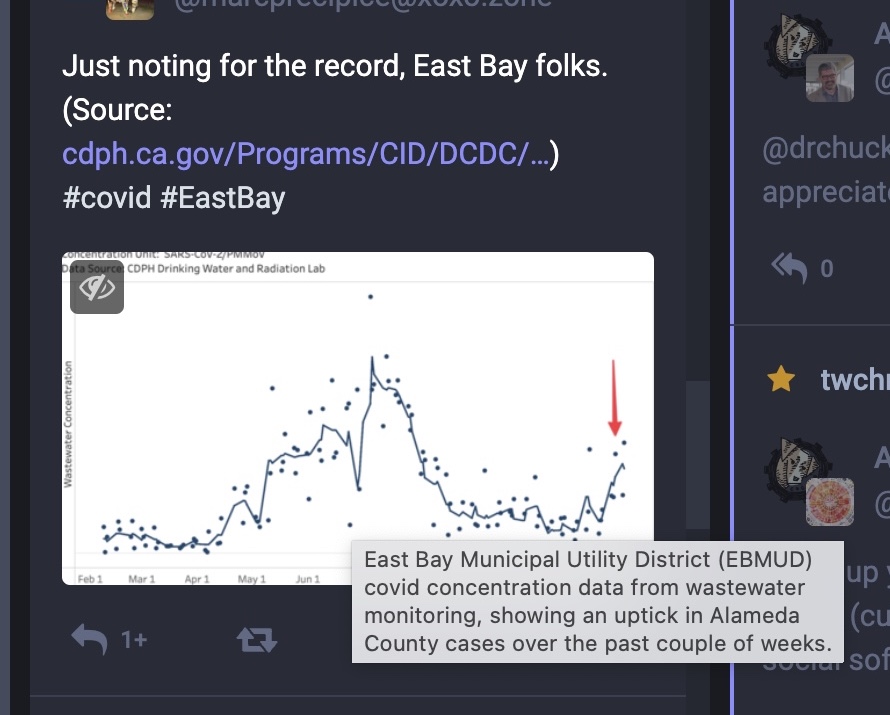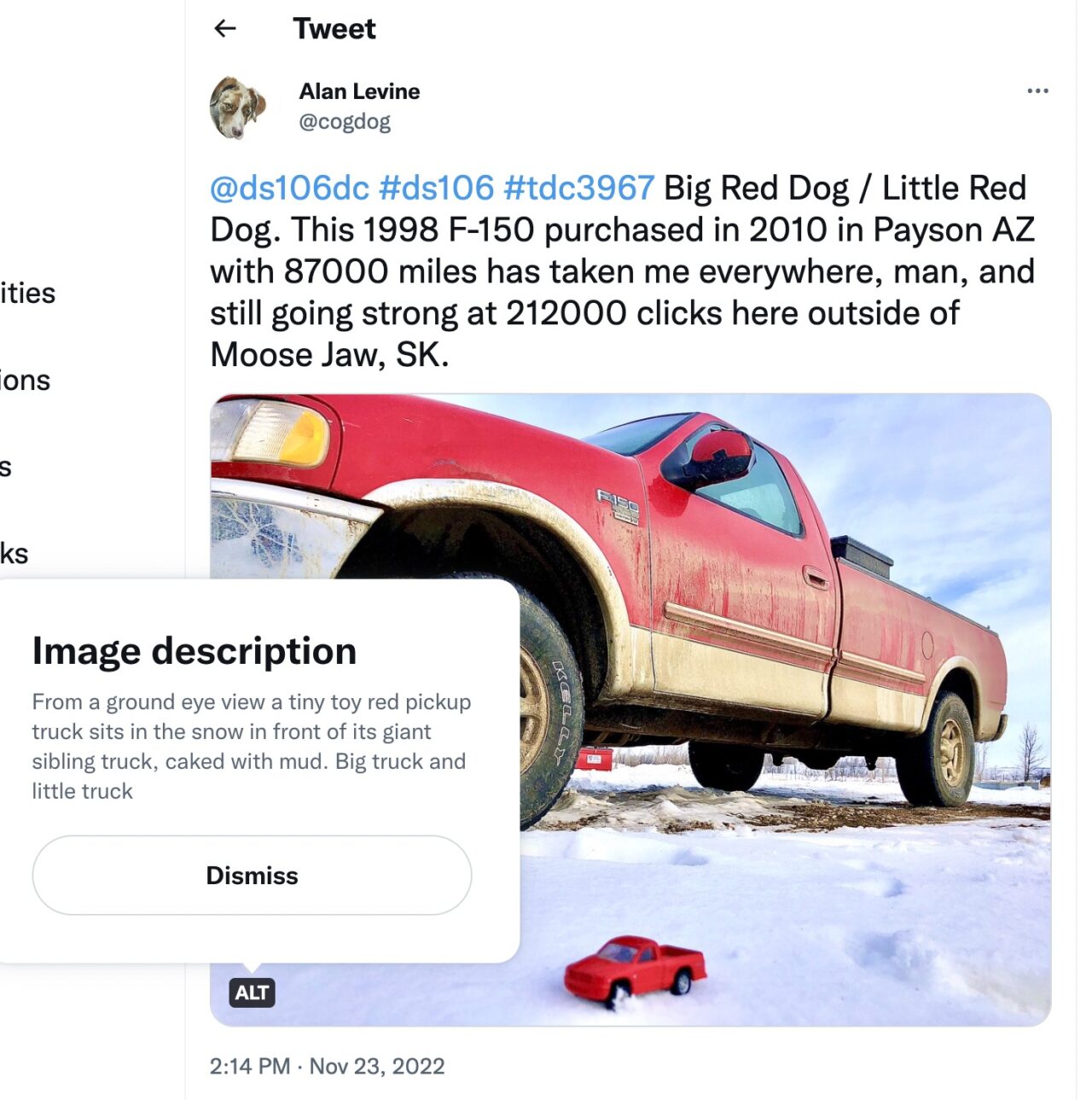There has been over the last few (insert measure of time) better awareness and attention given to making information in media available (aka accessible) for the visually impaired, via alt text or image descriptions (not a new topic ’round here). But here is something counter intuitive…
I suggest that alt text / media descriptions should be indicated, visible, and copiable, for… those who can see.
Huh?
I tried to make a case for it buried in a long rambling teetering off topic post on Prickly Little Bits of Image Accessibility
But my responses and experiences are that making it visible helps us be aware of our practice, good or bad. We could really all learn better alt text habits if we could see how other people do it.
In addition, I had situations where I posted an image in Twitter and as well Slack, and I have no simple way to copy my alt text hidden and stuffed away in twitter and use it elsewhere. On some sites you might see it on a hover, but it is not copyable.
https://cogdogblog.com/2022/11/prickly-bits-image-accessibility/
For Example…
For the majority of the web (including my own web site here) as a sighted person when you see an image, there is no indication if it has alt text or not. For fun, try the browser bookmarklet made by Brian Bennet that when activated, does something sneaky– it blurs all images on the page that lack alt text! It’s turnaround time:
Since there seems to be much more active interest and conversation about Good Alt Text practices in Mastodon, the practice is only visible by a hover text over an image.

Me, I can see that alt text to verify its presence. But what if I wanted to make use of that text? Just for me to write my own alt text of this screen shot, I had to manually type in the alt text again.
Again, if I want to get a full copy of the alt text I have to use my browser inspector. It’s visible but not quite accessible.
At least in my mobile mastodon client, MetaText, if I click an image, I have full access to read/copy an alt image’s text.
Of all places that do this in a way that I am dreaming of seeing (putting aside all impracticalities of making it happen), is the web interface for Twitter. Note there is (a) a visual indicator that alt text is available, and (b) if so, and clicked, you can not only see it, but copy the text.

This very fact allows me to use the original alt text in the version I am making for this screenshot:
From a ground eye view a tiny toy red pickup truck sits in the snow in front of its giant sibling truck, caked with mud. Big truck and little truck
alt text for image in tweet https://twitter.com/cogdog/status/1595511226712588288
Maybe I am the only person that wants to reuse alt text? But if I were to also post the same photo to Mastodon or Slack or (insert here), must I manually retype it again?
And that’s pure convenience.
More importantly, like making visible all attribution statements for open licensed images, it makes the practice of doing so public. And it enables a chance to help others see, analyze, and learn from the alt text practices for others.
A dog can dream, right?
Again, who should alt text be visible and readily reusable by everyone?
Featured Image:

[Media Description] View of a mountain across a valley, where the peak is visible, but the flanks are partly hidden by a thick cloud bank.



Do you use Chrome as a browser? As I just came across this
https://chrome.google.com/webstore/detail/alt-text-copy/diklkehamgifnoikknopgieldonffjfk
Thanks, it works okay, although you will not know there is no alt text until you see that nothing was copied (not much different from inspecting source). I still dream of a browser indicator of the presence it.